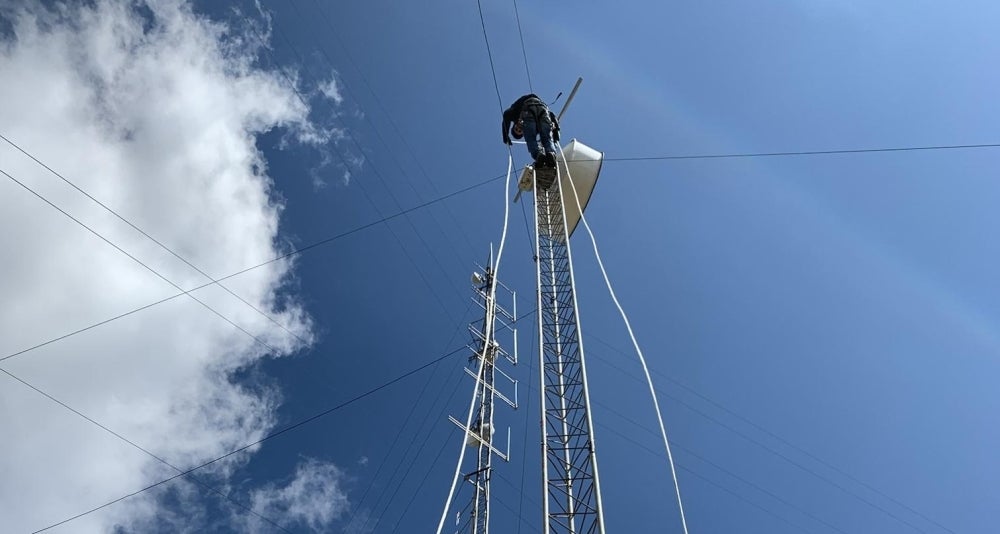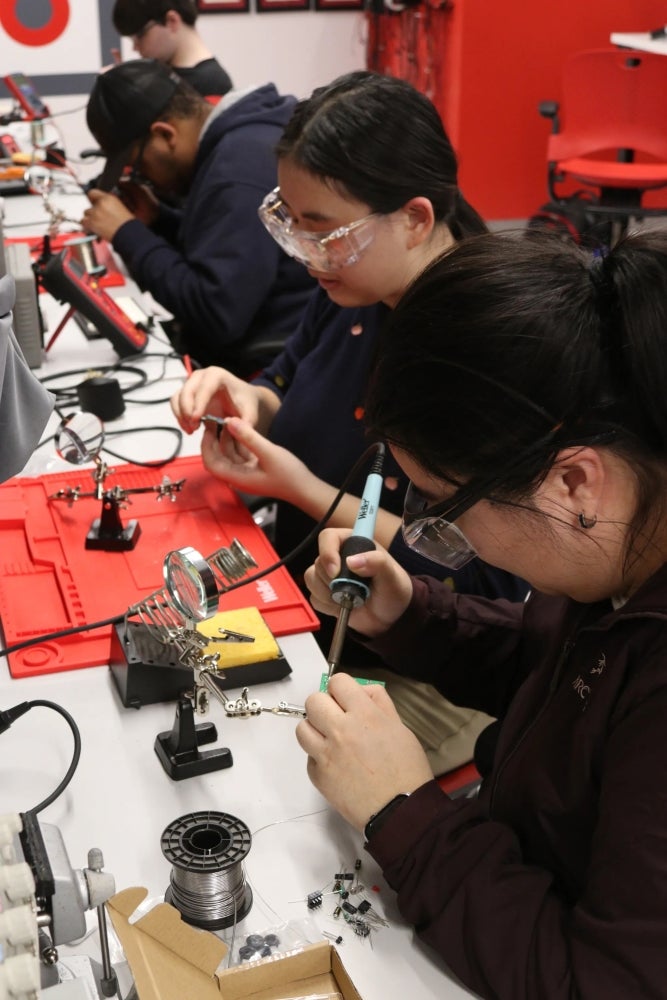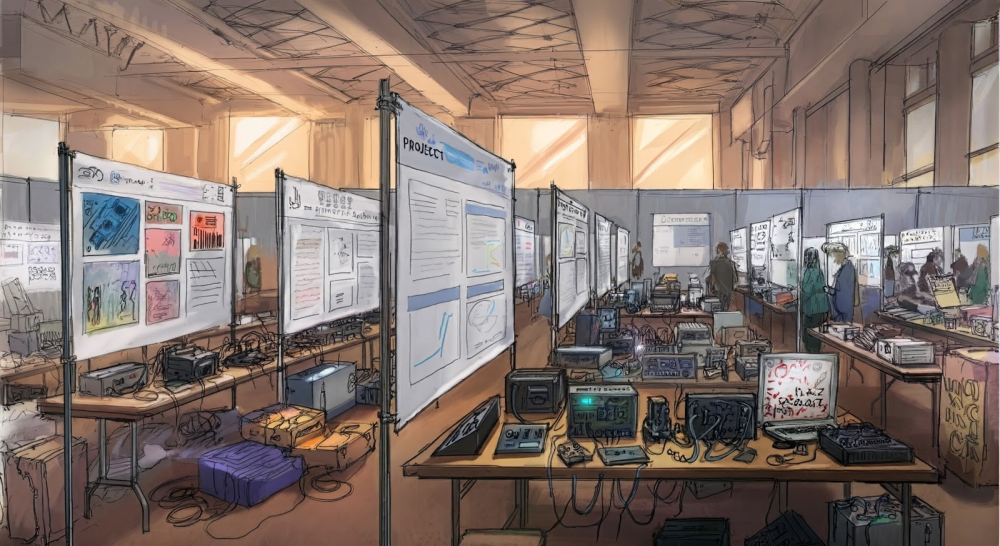
A garage door opener, the Voyager 1 space probe, and the card reader in front of the Darrin Communications Center. What do these have in common? Radio waves! Radio waves are everywhere, and it is only recently in human history that we learned how to use them to our advantage, in conjunction with emerging technologies.
Rensselaer Polytechnic Institute (RPI) has always pioneered new technologies. Rensselaer’s Amateur Radio Club (callsign W2SZ), was founded in 1911 as the Troy Wireless Club, roughly 20 years after the first demonstrations of radio waves. The goals of the club were to explore the new technology and make contact with other radio operators across long distances. Since the discovery of the governing equations in electromagnetism, there has been an explosive growth of practical applications of radio. Today, the membership of W2SZ maintains its enthusiasm and curiosity about the field, having expanded to many different activities that are ever-relevant in the modern world.
A major part of W2SZ is experimentation with electronics. In the past two years, club projects include developing a UAV-mount radio repeater, building an SDR microwave station, developing firmware for various radio models, deploying a portable satellite station, building antennas, hosting “Pixie kit” transceiver build sessions, and more. W2SZ students develop a physical intuition for the complicated nature of RF and Electronics Engineering and can connect coursework to applications in a meaningful way. Additionally, The club has worked with other clubs and organizations such as the Chess Club, the Embedded Hardware Club, Humans Versus Zombies, the Mercer X Lab, the RPI Drone Club, and the Rensselaer Society of Engineering Innovation, providing technical consulting and radio communication service.
Outside of RPI, W2SZ has an international presence. More competitive club members participate in contests, which are competitive games that the global amateur radio community participates in. Each contest has different rules, and most are restricted by different operating standards. Performing well in contests depends on technical and environmental factors, all of which affect radio propagation and performance. W2SZ, in conjunction with the Mount Greylock Expeditionary Force (MGEF) RPI alumni group, sets up half a dozen antennas on top of Mount Greylock every September and participates in a nationwide contest. Points are awarded for every contact made in a different grid location on every different frequency band from a few megahertz to multiple terahertz. Operating at higher frequencies requires specialized hardware, which is not commercially available. To perform well in these contests, members of the W2SZ alumni group design and fabricate their advanced hardware. Members of the club benefit from the experience and mentorship of these alumni, who themselves have had prolific careers in the wireless communication/telecommunications industry. What is perhaps the most important part of amateur radio is community service. Radio operators are critical for emergency events, such as the recent Hurricane Helene and Hurricane Milton. When telecommunications are affected by natural disasters, amateur radio operators are deployed to support emergency services and people in remote or devastated areas to provide aid. Members of W2SZ volunteer to support EMS staff at races, and are also available to support the community when the need arises. Additionally, W2SZ provides educational and testing services to students who are looking to receive their FCC License.
From historic spark gap transmitters in Russell Sage Laboratory to efficient modern radios with worldwide reach, W2SZ has witnessed exponential growth in the world of radio communications. Through technological development, human connection, and community service, W2SZ stands tall as a multidisciplinary club with much to offer to students and the general populace.



